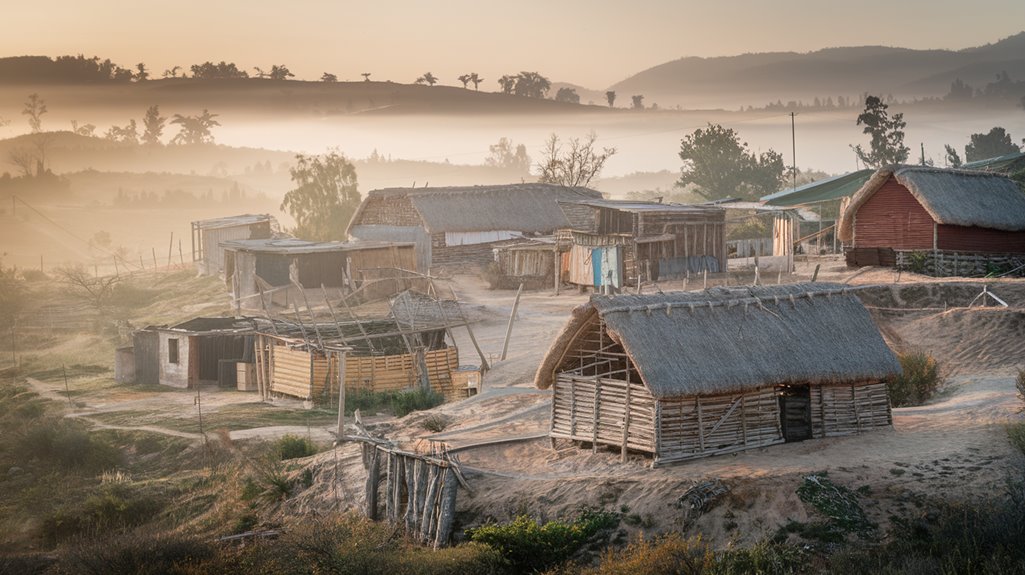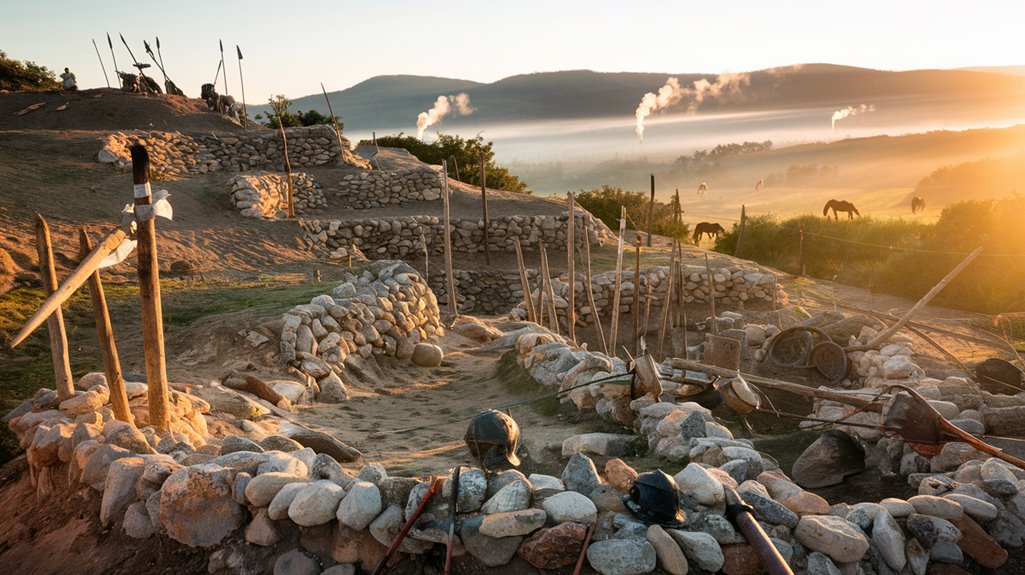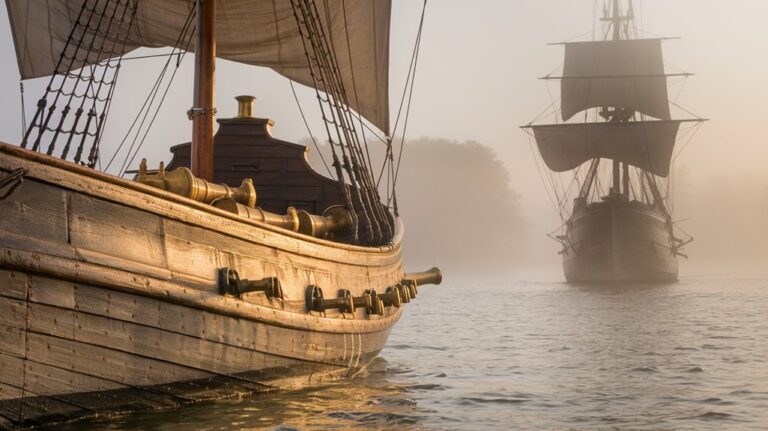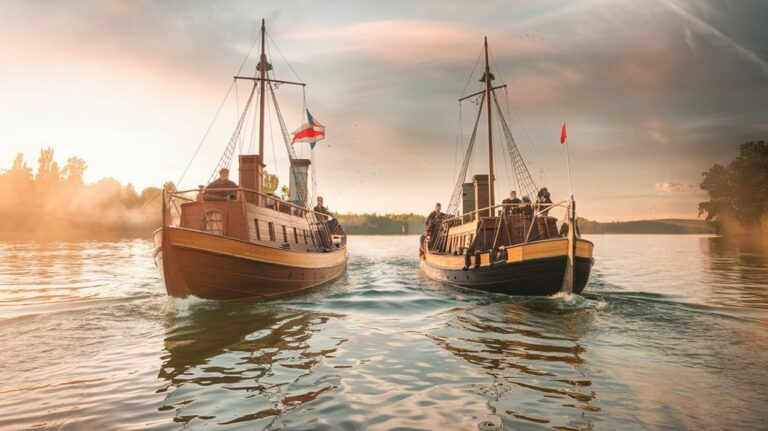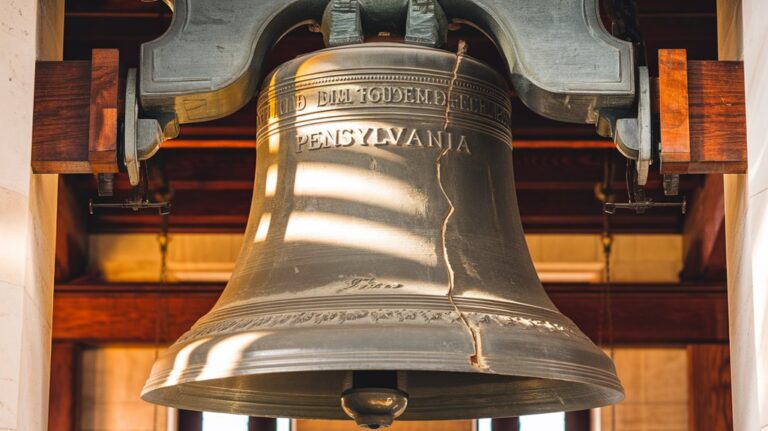The Mapuche Rebellion: Indigenous Resistance That Defied an Empire
You'll find that few indigenous resistance movements have shaped a nation's history quite like the Mapuche Rebellion. When Chile pushed into Araucanía during the 19th century, they didn't expect to encounter such fierce opposition. The Mapuche people, drawing on centuries of military experience and cultural resilience, mounted a resistance that would challenge an empire and establish a legacy of indigenous sovereignty that continues to influence South American politics today.
Origins of the Mapuche Uprising: A Fight for Ancestral Lands
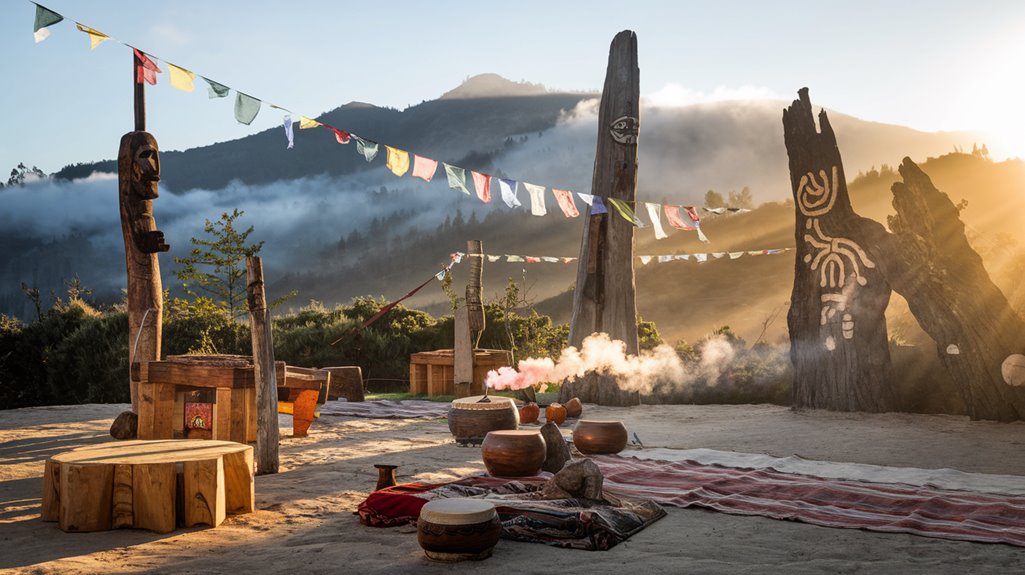
While the Mapuche people's struggle spans centuries, their uprising stems directly from the Spanish conquest and subsequent Chilean territorial expansion.
You'll find the roots of their resistance deeply embedded in the systematic dispossession of their ancestral lands, first by colonial powers and later by the Chilean state.
The fight for land reclamation intensified in 1861 when Chile launched its "Occupation of Araucanía" campaign, forcing Mapuche communities from their territories through violence and fraudulent deals.
Cultural preservation became increasingly critical as their language and traditional way of life faced severe suppression under state policies. Today, they represent twelve percent of Chile's population, yet continue to face marginalization.
Despite facing overwhelming odds, the Mapuche have maintained their identity and continue their resistance through various means, from peace treaties to direct action, making their uprising one of the longest-standing Indigenous resistance movements. The Fütamalon Great Uprising emerged as a crucial movement to resist Chilean expansion southward into Mapuche territories.
The Spark That Ignited: Chilean Expansion Into Araucanía
As Chile emerged from its independence in the mid-19th century, economic pressures and territorial ambitions set the stage for a devastating expansion into Araucanía.
You'll find that economic motivations, particularly the growing demand for wheat during the California Gold Rush, drove Chile's strategic expansion into Mapuche territory.
With German colonists already settled in Valdivia and Osorno, and sheep farming dominating the Strait of Magellan, Araucanía remained Chile's only option for agricultural growth.
Colonel Cornelio Saavedra Rodríguez implemented a state-led colonization plan that would forever change the region's landscape.
The government's plan mirrored the United States' frontier model: divide state lands, transfer titles to private owners, and encourage foreign settlement.
By 1860, non-Mapuches had already acquired significant portions of land between the Bío-Bío and Malleco Rivers, despite earlier treaties recognizing Mapuche autonomy.
This encroachment would spark one of Chile's most significant indigenous conflicts, leading to campaigns from 1861 to 1883 that resulted in thousands of deaths and the end of Mapuche independence.
Battle Strategies and Resistance Tactics
Throughout their resistance against Spanish and Chilean forces, the Mapuche demonstrated remarkable military adaptability by evolving from traditional infantry warfare to sophisticated guerrilla tactics.
You'll find their tactical innovations were particularly evident in their strategic use of terrain, where they'd dig camouflaged pits and trenches to counter Spanish cavalry.
Under leaders like Lautaro, they mastered guerrilla warfare by combining mounted lancers with infantry formations. These formations were inspired by the Spanish Tercio system they observed during battles.
They'd position two-thirds of their forces as cavalry on the wings while maintaining foot soldiers in the center.
The Mapuche didn't just adopt Spanish military technology – they improved upon it.
Modern extremist groups continue these resistance traditions through targeted attacks on logging equipment and infrastructure.
They learned to build fortresses, use espionage, and conduct malón raids.
Their command structure, led by elected toquis, guaranteed efficient organization and quick response to threats through sophisticated communication systems like the pulquitin.
Key Leaders and Their Roles in the 1881 Rebellion
When Mapuche chiefs gathered in mid-March 1881 to plan their uprising, they set in motion one of their most significant acts of resistance against Chilean occupation.
Under the leadership of various chiefs, including Venacio Coñoepán and Purrán, they planned a unified insurrection for November 5th, despite knowing they'd likely face defeat.
Chilean perception of Mapuche leadership was hostile, viewing the chiefs as obstacles to colonization. This historic conflict would lead to the Pacification of Araucania, a campaign that devastated indigenous communities. The devastating military campaign resulted in the loss of 90 percent of Mapuche ancestral lands.
Colonel Gregorio Urrutia and Interior Minister Manuel Recabarren led the Chilean response, establishing forts and applying military pressure.
While some chiefs like Nahueltripai cooperated with Chilean authorities, others fought back fiercely.
The death of Chief Domingo Melín in 1880 sparked an attack on Traiguén, while the Pehuenches, under chiefs like Pichiñán, launched assaults on Argentine outposts at Chos Malal.
The Aftermath: Consequences and Cultural Impact
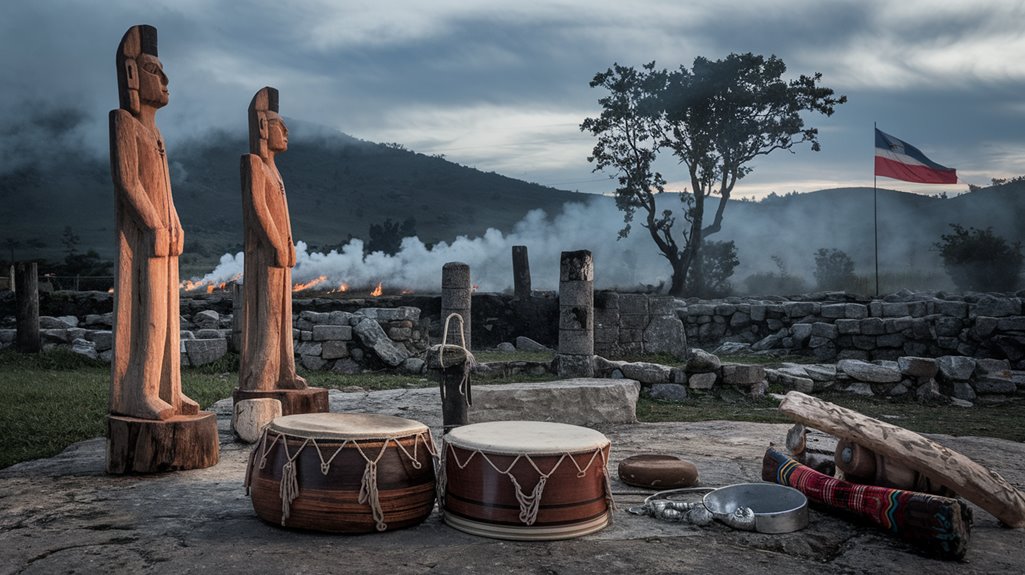
The 1881 Mapuche Rebellion created ripples that continue to shape Chilean society today.
You'll find its legacy in the persistent economic disparities between Mapuche communities and the rest of Chile, with regions like Araucanía experiencing poverty rates nearly 60% higher than the national average.
 illegal terrorist groups by Chile's Chamber of Deputies has only intensified this resistance.
illegal terrorist groups by Chile's Chamber of Deputies has only intensified this resistance.
This resistance echoes the War of Arauco, which demonstrated their century-long ability to maintain independence against colonial forces.
While the Treaty of Quilín once granted them unique recognition among indigenous peoples under Spanish rule, today's Mapuche face militarization reminiscent of the Pinochet era.
You can see this tension in recent events, such as the controversial 2022 visit by Interior Minister Siches and subsequent military deployments.
These actions have reignited historical grievances and strengthened the Mapuche's determination to protect their ancestral lands from corporate interests.
Legacy of the Mapuche Struggle for Self-Determination
Despite centuries of resistance and conflict, modern Mapuche self-determination efforts stem largely from the pivotal Treaty of Quilín in 1641, which initially guaranteed their autonomy over 10 million hectares south of the Bío-Bío River.
You'll find that this historical agreement shapes current demands for territorial control and cultural recognition.
While the "Pacification of Araucanía" later reduced Mapuche lands to just 475,000 hectares, their struggle for autonomy hasn't wavered. The emergence of Mapuche nationalism in the late 20th century strengthened their cultural identity and resistance efforts.
The 1931 Austral Property Law further devastated indigenous land holdings as settlers and corporations seized additional territory.
Today's Mapuche identity remains deeply rooted in both resistance and cultural preservation, as organizations like CAM fight for land recovery while others pursue diplomatic solutions.
Their legacy continues through international recognition of indigenous rights, with UN charters supporting their cause.
Though methods vary, from peaceful negotiations to direct action, the core mission persists: reclaiming their ancestral Wallmapu and preserving their distinct cultural heritage.

